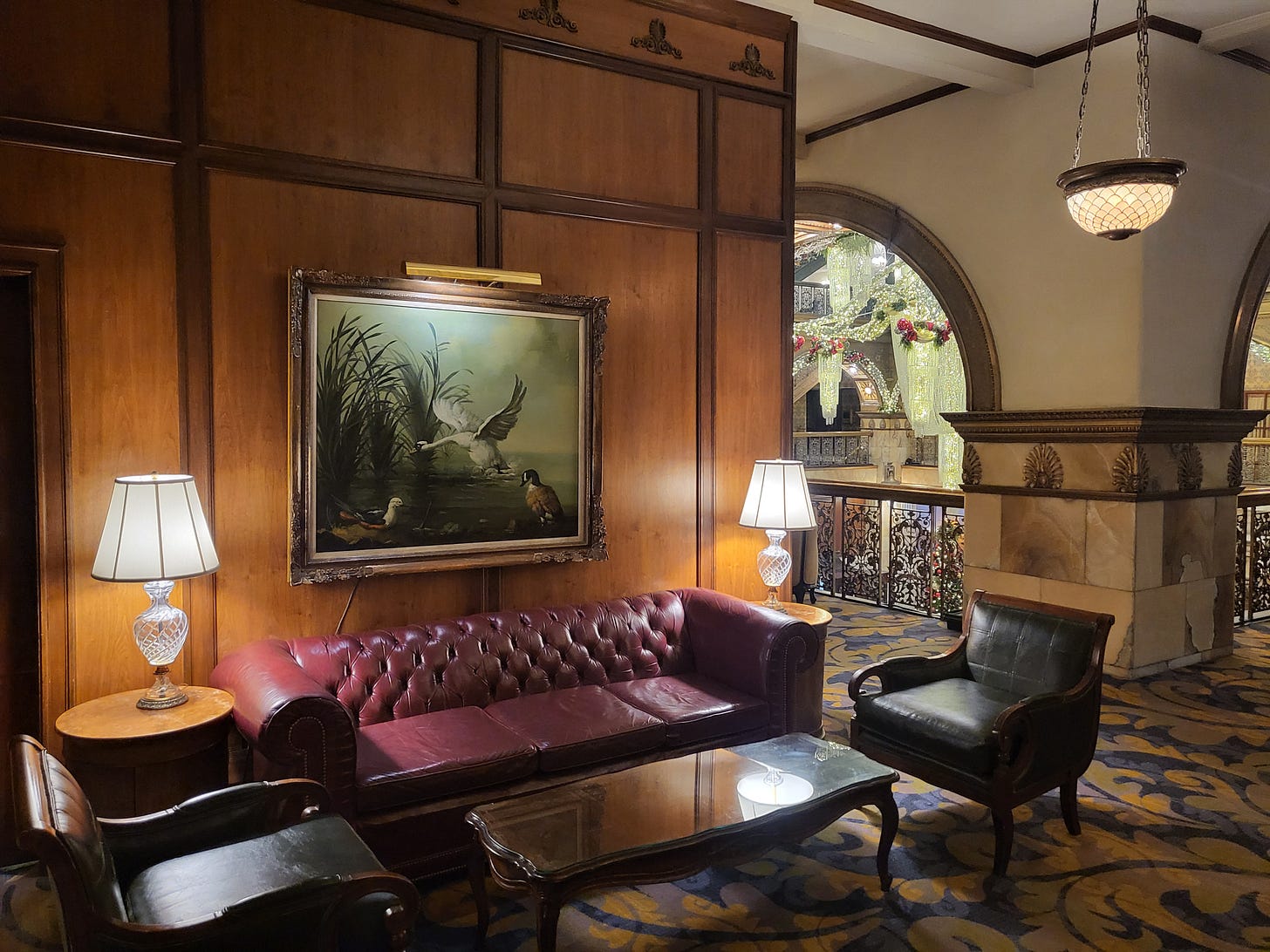Where should we pay tribute to wilderness?
Commemorating artifacts, ideas, and wilderness-as-place

A few months ago, I pondered a wilderness memorial in downtown Denver. Meanwhile, the Wyoming legislature was pondering a similar memorial for downtown Cheyenne. The places and forms of these memorials felt wrong to me—but challenged me to identify which places and forms would be right.
On December 6, 1919, two foresters met at Denver’s Brown Palace Hotel. A junior Denver-based US Forest Service employee named Arthur Carhart talked through some of his recent ideas with an Albuquerque Assistant District Forester named Aldo Leopold. Assigned to plat a road and recreational homesites at remote Trappers Lake in western Colorado, Carhart had responded that the lake would be better off without such development. Leopold had recently faced a similar challenge at Lake Mary, near Flagstaff, Arizona. What sorts of rules should apply to the development of remote, scenic recreational sites?
They talked at some length, and afterwards Carhart summarized the discussion in a memo. He later argued that Trappers Lake was the birthplace of wilderness ideals, and that the Brown Palace meeting was the first time that professional foresters expressed the hands-off principles eventually memorialized in the 1964 Wilderness Act.
The Brown Palace’s second-story public areas still reflect an elegant 1910s luxury. I fleetingly wondered how the history of the wilderness idea might have differed if Leopold had instead chosen to meet in some dingy Forest Service office. But the question didn’t really have legs; I left feeling that this place couldn't compare to Trappers Lake itself.
I was thus sad to learn of the Wyoming legislature earmarking $35,000 to preserve a tree in Shoshone National Forest’s Washakie Wilderness. The tree was inscribed by some surveyors in October 1893, shortly after these lands were set aside as the nation’s first forest reserve. The plan is to extract the tree and helicopter it to the Wyoming State Museum, which is housed in a heavy concrete office building in downtown Cheyenne.
The story was newsworthy because the Wyoming legislature was simultaneously expressing hostility toward the idea of federal land ownership. Yet here it was celebrating early public lands heroes. A good thing!... right?
Such issues are always complicated. Why should Americans celebrate the first white men—or maybe merely the first government representatives—to visit a place and deface its trees? Surely others had been doing so for millennia. And why would we grant a waiver allowing violation of wilderness principles to bring in a helicopter and crew for this unusual form of salvage logging?
Answer: Because Americans love the impulse to honor special natural places. Even more so, we love to honor changes in societal relationships to those places. The point isn’t only Trappers Lake or the Washakie Wilderness, but also shared ideas about what those places mean and how to manage them. At the Brown Palace or the Wyoming State Museum, artifacts can make these ideas accessible to plenty of people.
But in such settings, do those ideas have legs? If the point is to get the public to honor special natural places, can you ever really do that with an artifact or an idea? Or does it have to be a place itself?
On my next visit to Denver, I decided, I should skip the Brown Palace and check out the traditionally impoverished neighborhood of Globeville. There, folks including the Nature Conservancy are honoring nature and wilderness with a different kind of artifact. They’re planting trees.
Discussion:
Here’s my occasional reminder that publishing these essays is a business for me, powered by revenues from my paying subscribers. Many thanks to them! And to the rest of you, might this be the week you decide to join them?




I suppose a little plaque would blend nicely into the Brown Palace. But who would even know to look for it? A very small group of cognoscenti, I guess.
As for the tree, the Museum could do something with it. And given the odd internal contradictions of Wyoming, it might be great. But I'd prefer they leave that tree where it is.
As for really honoring wilderness, I think we mostly do that by going. But as I age, I fear its going to have to be ok to drive to the trailhead and wave. Beyond the geography of it, though, I think the ongoing conversation is also, in part, a tribute.
Fine piece, John. Thanks for reminding us how we get seduced by the idea of something, not necessarily the reality.